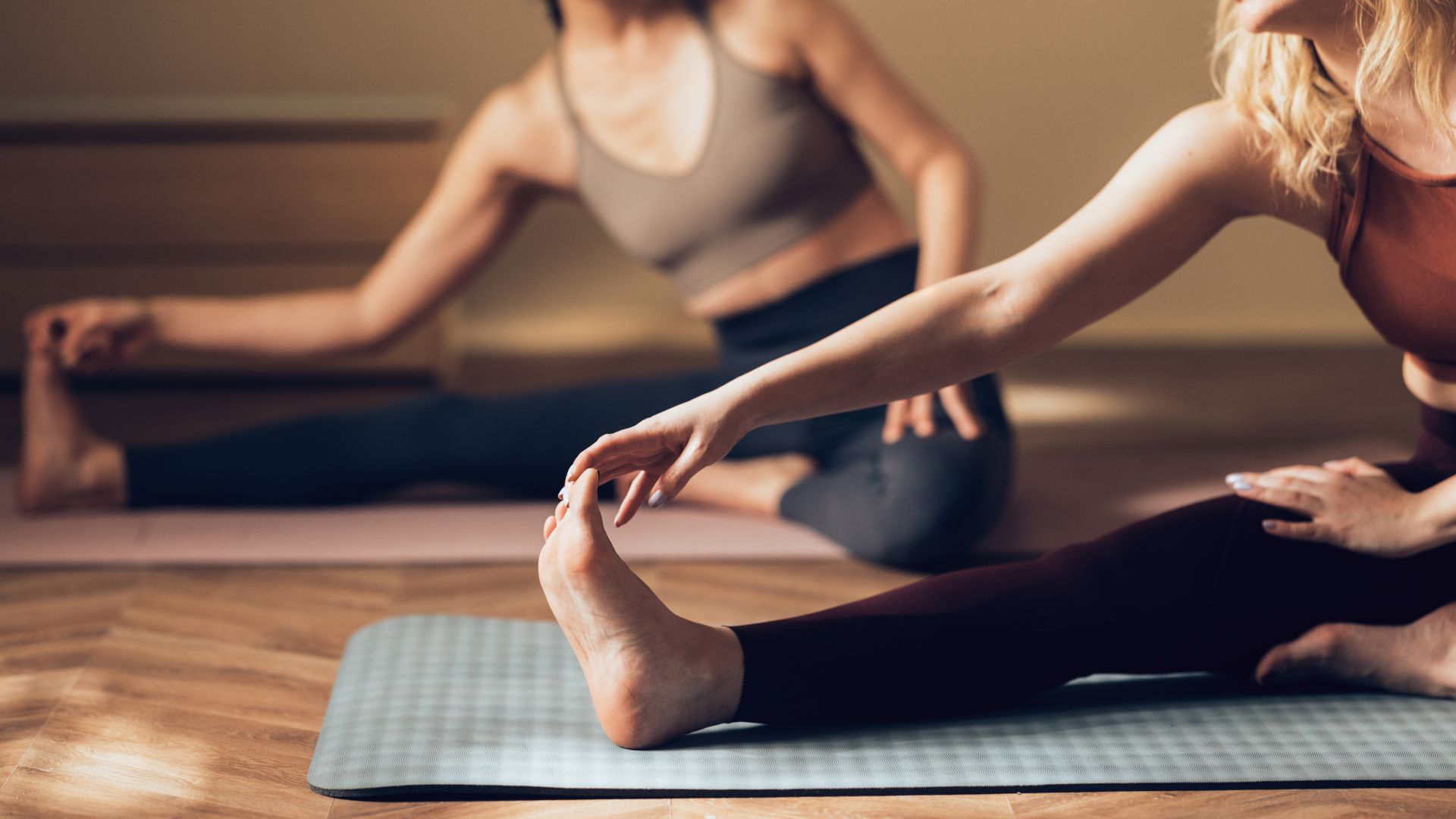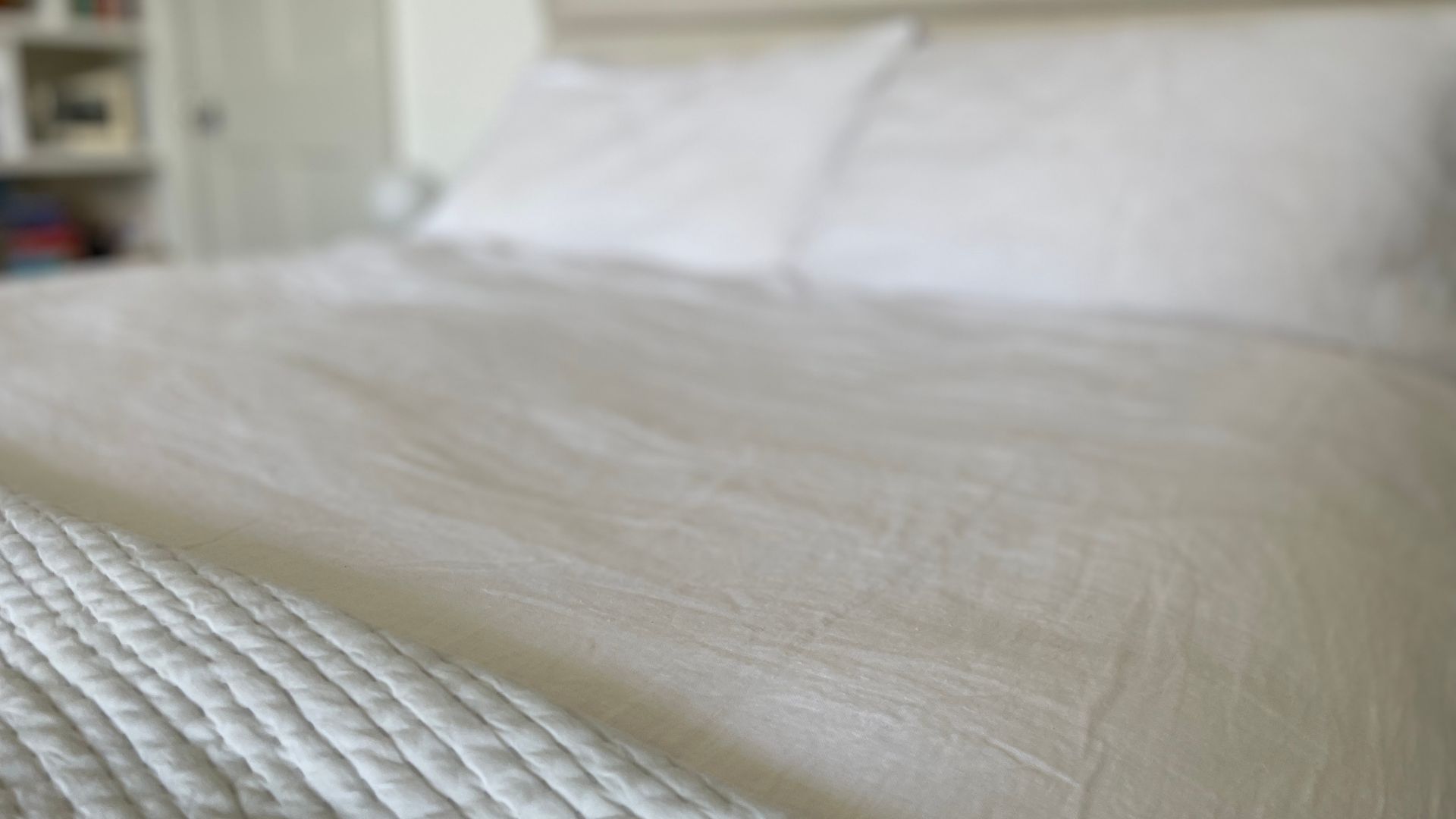This type of Pilates is 'safer' and 'more effective' than others - here are 5 exercises to try for yourself
STOTT Pilates is the underrated exercise we're trying this month for a stronger back and core


Pilates is the go-to workout for 2025 - but one type in particular has caught our eye: STOTT Pilates. This lesser-known form of exercise is at the top of our list for a must-try if you're looking to reap the benefits of the low-impact exercise while bettering your posture and improving lower-back strength.
There are so many different types of Pilates - from classic mat workouts and Pilates with weights to Reformer Pilates - so what makes STOTT so different? The method, created by husband and wife team Lindsay and Moira Merrithew alongside sports professionals and physical therapists, combines the Pilates we know and love with exercise science and rehabilitation to make it "safer" and "more effective", according to the founders.
With benefits like improved strength, posture, flexibility, and balance, with a lower risk of back pain, it sounds like the perfect workout for our thick yoga mats. Here, we speak to a STOTT-certified instructor to reveal what you need to know and the five exercises to reap the benefits for yourself.
What is STOTT Pilates?
The STOTT Pilates method combines classical Pilates with physiotherapy and exercise science, says Chloe Langdale, a STOTT-certified Pilates instructor and the founder of Studio Emba. "It places a strong emphasis on the 'neutral spine' to restore the spine's natural curvature, prompting better posture and overall movement," she explains.
This is just one of the key differences between classical Pilates and STOTT. When you're doing a Pilates abs workout, for instance, you'll likely be told to press your spine into the floor, whereas STOTT focuses on keeping the spine's natural curve. Movements are also focused on aligning the muscles around the joints in the body.
The method blends Pilates as pioneered by Joseph Pilates "with a modern approach" that "gives you a greater awareness of how your body moves and functions, allowing you to reap the benefits for both mind and body", the instructor adds.
It's thought to be safer and more effective than other types of Pilates as it's fully adjustable to your level and it utilises modern exercise and physiotherapy approaches alongside the classic exercises.
Sign up for the woman&home newsletter
Sign up to our free daily email for the latest royal and entertainment news, interesting opinion, expert advice on styling and beauty trends, and no-nonsense guides to the health and wellness questions you want answered.
Can you do STOTT Pilates without a reformer?
Absolutely, says Langdale. "While STOTT Pilates uses the big apparatus such as the Reformer and the Cadillac, the fundamentals lie in the mat work. All you need is a yoga mat and some comfy clothing to get started," she says.
"The method also uses small props like a softball or flex band. While they're not essential, they're a fun way to spice up your routine and budget-friendly too," she adds.
STOTT Pilates workout at home
1. Ab Prep
- Lie on your back with your knees bent.
- Engage your core by drawing your belly button towards your spine. You should feel like you're 'scooping' your abdominal muscles.
- Gently, lift your head and shoulders off the mat.
- Exhale, and come back down.
- "While you flex through your spin, the key is to keep that neutral spine position intact," says Langdale.
2. Breaststroke
- Turn over and lie down on your stomach, extend your elbows above your head so they come in line with your shoulders.
- Using your upper back muscles, lift your chest and shoulders off the mat.
- Be sure to maintain a neutral spine.
- Your lower ribs should stay in contact with the floor, stabilising the lower body while the upper back is extended.
If you find yourself sitting down a lot - working from home, for example, then "this one's perfect for stretching and strengthening your upper and mid-back", says the instructor.
3. Spine twist
- Coming up to a sitting position on your yoga mat, extend your legs out in front of you and hold your arms out to the sides.
- Exhale, rotate your torso to one side, keeping your hips forward.
- Be sure to engage your core and that the rotation comes from your mid-back and not your hips.
- Inhale, return to the starting position. Repeat on the other side, being sure to maintain a neutral spine.
"This exercise works your obliques as you rotate your spine," says Langdale, meaning it's a great core exercise to do at home. "Each twist feels like you're growing taller."
4. Shoulder bridge prep
- Lie with your back against the yoga mat, arms by your sides and legs bent with your feet resting on the floor.
- Engage your core by pulling your belly button towards your spine.
- Keeping your spine neutral, inhale and slowly peel your spine up into a bridge.
- Exhale and slowly lower yourself back down.
"This is a great way to target your lower body," says the instructor. "Focus on engaging your glutes and hamstrings to help extend your hips and build strength in the lower back."
5. Staggered legs
- Turning onto your side, keep your legs extended with one on top of the other.
- Rest your head comfortably on your arm.
- Engage your core and be sure to keep your pelvis stable as you lift one leg up above the line of your body.
- Hold it there for a second, before bringing the other leg up to meet it.
- Keep both legs elevated, ensuring your core remains engaged.
- Bring your bottom leg slowly down to the mat again and then the other leg.
- Repeat the exercise on both sides.
"This move works the hips, inner thighs, and obliques," says Langdale. "A fabulous exercise to engage multiple muscle groups at once."
Can STOTT Pilates help prevent lower back pain?
Yes, says Langdale. "Many STOTT Pilates exercises are designed to strengthen the muscles that support your spine, such as the abdominals, glutes, and lower back muscles," she explains. "By focusing on better posture and improving movement patterns, STOTT Pilates can help relieve tension in your lower back and promote more sustainable, functional movement."
But of course, if you're dealing with lower back pain and have a specific injury or condition, "it's always a good idea to check in with a medical professional" before trying a new exercise routine, she says.
STOTT Pilates benefits
- Better posture: STOTT Pilates focuses on restoring the spine's natural curvature and the muscles around the joints, which can promote better posture.
- Improved core strength and stability: Much like other types of Pilates, STOTT uses abdominal exercises that engage the core muscles as part of the movements, which helps boost core strength.
- Improved muscular strength: Similar to a regular full-body Pilates workout, STOTT uses your body body weight to challenge the muscles and make them stronger.
- Can help prevent injury: As STOTT encourages you to have heightened body awareness and better joint mobility, it can help prevent injuries in other sports with improved agility and balance.
- Enhances athletic performance: Whether you're a runner, cyclist, or just love a good gym workout, STOTT can boost muscular strength, which can help you out in other sports.
- Relieves stress: One of the key benefits of Pilates is the positive impact it can have on our mental health. Pilates has been shown to help lower cortisol levels and in turn, this reduces stress.

Grace Walsh is woman&home's Health Channel Editor, working across the areas of fitness, nutrition, sleep, mental health, relationships, and sex. She is also a qualified fitness instructor. In 2025, she will be taking on her third marathon in Brighton, completing her first ultra marathon, and qualifying as a certified personal trainer and nutrition coach.
A digital journalist with over seven years experience as a writer and editor for UK publications, Grace has covered (almost) everything in the world of health and wellbeing with bylines in Cosmopolitan, Red, The i Paper, GoodtoKnow, and more.
-
 I've found the way to get "French girl sleep" - the secret lies in your sheets
I've found the way to get "French girl sleep" - the secret lies in your sheetsSoak & Sleep's French Linen Bedding is available in over ten colours, for every size of bed. It's super soft, ultra-breathable and perfect for hot sleepers.
By Laura Honey
-
 32 ways to bring wellness rituals into your everyday routine
32 ways to bring wellness rituals into your everyday routineExpert-backed ways to boost your health and wellbeing
By Lauren Hughes